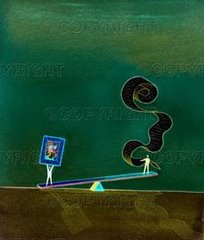Arrival of the Volm Reptilians
The Reptilian Volm that arrived at the end of Season Two join the resistance and provide advanced weapons to help the resistance wage war against the Espheni (Greys). Apparently, they have been waging a centuries long war against each other from star system to star system over a flower (or at least whatever the flower represents).
The Reptilian Volm that arrived at the end of Season Two join the resistance and provide advanced weapons to help the resistance wage war against the Espheni (Greys). Apparently, they have been waging a centuries long war against each other from star system to star system over a flower (or at least whatever the flower represents).
Hal's "Infection"
In the Second Season of Falling Skies, Hal becomes infected by an Espheni parasite. The parasite apparently impacts Hal's nervous system and paralyzes him during the day, or at least his legs. However, at night it controls his entire body and mind and leads him to rendezvous with Karen. Maggie discovers his nighttime treks from the mud on his boots, but Hal remembers none of this.
Lourdes the Assassin
Throughout the season, an unknown assassin kills several key personnel and funnels information to the Espheni, again through a parasite. The assassin eventually turns out to be Lourdes, the pre-med student who has been helping Anne with medical issues and surgery throughout the series. She is one of the last people anyone would suspect to be an assassin. Lourdes eventually is discovered to be a mole and used to convey false battle plans to the Espheni.
Alien Hybrid Baby
Like in V, an alien hybrid baby is created. Unlike V, the alien is not a “love child” but somehow had
her DNA corrupted with Alien DNA to produce a hybrid. This tracks well with alien conspiracy culture in the sense that it happened during Anne's (the mother's) encounter with Karen and
the Overlord. Alternatively, Tom Mason could’ve been corrupted when taken aboard
the alien ship to somehow produce an alien child
Unlike V, the child is not born into a welcoming group who
want to protect it. Instead the mother (Anne) flees
with the child from the human enclave in Charleston. However, the hybrid child is wanted by the aliens, and Anne and the
child are abducted by them (again). In V, the hybrid child is viewed as a threat by all but the
high commander and the child brings peace between the two civilizations. At the end of Season Three, it's not clear what purpose the hybrid child serves.
The Espheni Power Shield & Same-old, Same-old
Throughout the season, the Espheni have been constructing a power source in Boston to project a planetary defense grid. The destruction of the power shield becomes the main focus of the 2nd Mass, and their eventual success leads to an Espheni retreat and meeting between Tom Mason and the Volm Commander, who is the father of Cochise - the human name of the Volm's human liaison. Unfortunately, this meeting does not go down as one of equals and the Volm Commander essentially offers the same deal the Espheni did at the beginning of the Season: resettlement in a neo-reservation based in Brazil. The season ends with Cochise providing weapons and escape for the 2nd Mass to avoid resettlement.
The Espheni Power Shield & Same-old, Same-old
Throughout the season, the Espheni have been constructing a power source in Boston to project a planetary defense grid. The destruction of the power shield becomes the main focus of the 2nd Mass, and their eventual success leads to an Espheni retreat and meeting between Tom Mason and the Volm Commander, who is the father of Cochise - the human name of the Volm's human liaison. Unfortunately, this meeting does not go down as one of equals and the Volm Commander essentially offers the same deal the Espheni did at the beginning of the Season: resettlement in a neo-reservation based in Brazil. The season ends with Cochise providing weapons and escape for the 2nd Mass to avoid resettlement.

